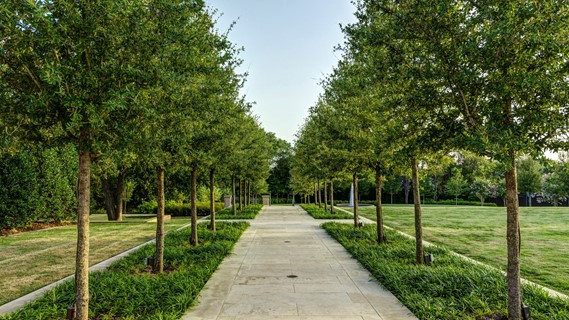The 9-Second Trick For Hilton Head Landscapes
The 9-Second Trick For Hilton Head Landscapes
Blog Article
More About Hilton Head Landscapes
Table of ContentsHilton Head Landscapes Fundamentals ExplainedGetting The Hilton Head Landscapes To WorkHilton Head Landscapes Fundamentals ExplainedNot known Incorrect Statements About Hilton Head Landscapes A Biased View of Hilton Head LandscapesGet This Report on Hilton Head LandscapesExamine This Report on Hilton Head Landscapes
Line develops all types and patterns and can be utilized in a variety of methods the landscape. Line in the landscape is created by the edge in between 2 materials, the summary or silhouette of a form, or a lengthy straight function. Lines are a powerful tool for the developer since they can be used to develop an unlimited variety of forms and forms, and they regulate motion of the eye and the body.

Lines can have one or more features, such as those explained below, yet they typically offer various objectives. Number 1. Lines in the landscape - hilton head landscapers. The properties of lines identify just how people reply to the landscape, both mentally and physically. Straight lines are architectural and forceful; they produce an official character, are typically connected with a balanced style, and lead the eye directly to a centerpiece.
Not known Facts About Hilton Head Landscapes
Curved lines create an informal, all-natural, relaxed personality that is linked more with nature and unbalanced equilibrium. Rounded lines relocate the eye at a slower speed and add secret to the area by producing surprise sights.
Vertical lines in the landscape include tall, slim plant product, such as trees, or tall structures, such as an arbor or a bird house on a pole. Straight lines relocate the eye along the ground airplane and can make a space feel larger. Low lines are more subdued and develop a sensation of rest or repose.
Little Known Questions About Hilton Head Landscapes.
Low lines are produced by low yard walls, sidewalks, and short bushes. Lines are used to attract forms on a strategy. In plan sight, they specify plant beds and hardscape areas. Lines are also produced by the upright forms of constructed features and plant product. There are 3 primary line kinds that develop form in the landscape: bedlines, hardscape lines, and plant lines.
Bedlines attach plant material to your home and hardscape because the eye adheres to the line, moving the stare through the landscape. Hardscape lines are produced by the side of the hardscape, which marks the built structure. Line can likewise be produced by lengthy and slim products, such as a fence or wall surface.
An Unbiased View of Hilton Head Landscapes
Form is located in both hardscape and plants, and it is generally the leading visual aspect that spatially organizes the landscape and commonly establishes the design of the yard. The type of frameworks, plant beds, and garden ornaments also figures out the general type style of the garden. Formal, geometric forms consist of circles, squares, and polygons.
Plants create kind in the yard via their outlines or silhouettes, but kind can additionally be defined by a void or negative area between plants - Landscaping bluffton sc (https://moz.com/community/q/user/h1tnhdlndscps?_=1719959081810). Circles can be cycles, or they can be split into half circles or circle segments and combined with lines to create arcs and tangents
Hilton Head Landscapes Fundamentals Explained
Circles are a solid design type because the eye is constantly attracted to the center, try here which can be utilized to stress a focal point or link various other types. Round types in hardscape and grass panels.
The square form can likewise be fractional and secondhand repeatedly to produce a grid pattern. Unlike circles, squares are more powerful on the edges, which can be lined up or overlapped to produce one-of-a-kind patterns and more complicated kinds. Polygons are many-sided forms with straight edges. Triangulars, for instance, are three-sided polygons.
Twisting lines typically resemble the all-natural course of rivers or streams and can be referred to as smooth lines with deeply bent wavinesses. Twisting lines (Figure 3) work well for paths, plant bedlines, and completely dry stream beds. Twisting lines can include passion and secret to a yard by leading customers around edges to uncover brand-new sights and areas.
Fascination About Hilton Head Landscapes

Figure 5. Fragmented sides: tipping stones in pathway. Kind is one of the most enduring quality of a plant (landscaping hilton head sc). https://moz.com/community/q/user/h1tnhdlndscps?_=1719959081810. Typical plant forms are well established and standard, as kind is the most consistent and well-known attribute of plants. Form can likewise be developed with the massing of plants, where the overall mass creates a various form than a specific plant.
A highly different form must be made use of with careone or two job well as a prime focus, but a lot of develop mayhem. Natural plant types, as opposed to over-trimmed types, ought to develop the mass of the make-up. The significance of total form is basically reliant on the checking out perspectivethe kind of a tree can appear fairly different to a person standing under the cover versus viewing the tree from a distance in an open area.
Hilton Head Landscapes Can Be Fun For Anyone
Plant forms additionally develop and define the space or open spaces between the plants, producing either convex or scooped kinds in the voids. High-arching tree branches normally develop a concave open room under the branches, and a rounded canopy with low branches fills up the area to produce a convex type in the open area under the tree.

Report this page